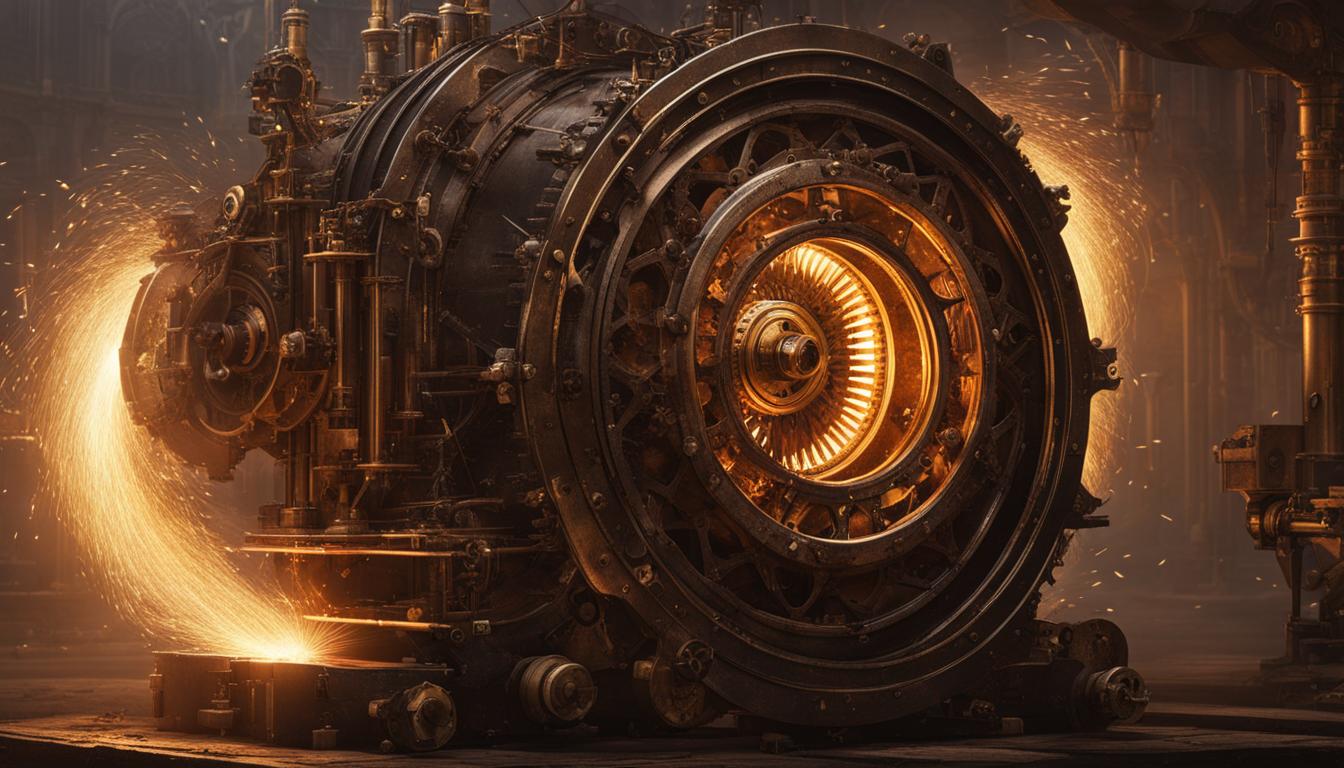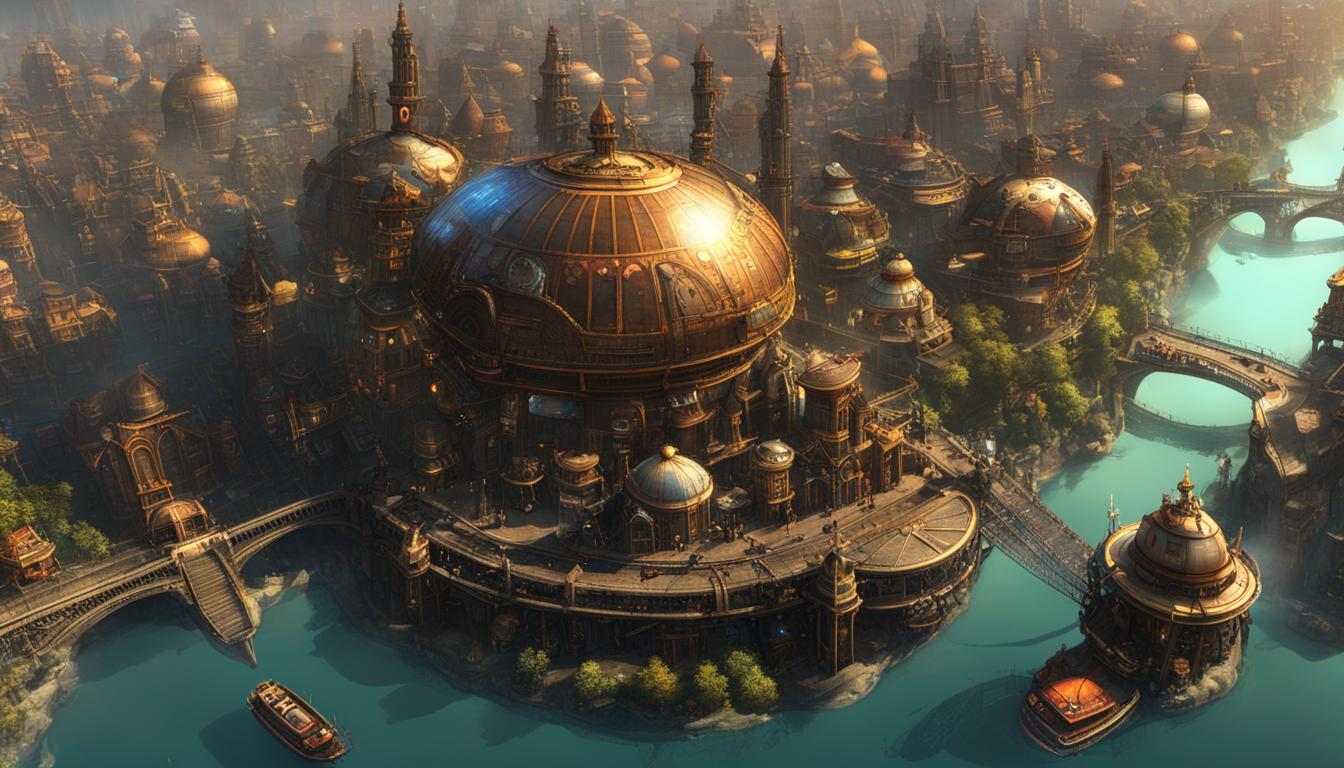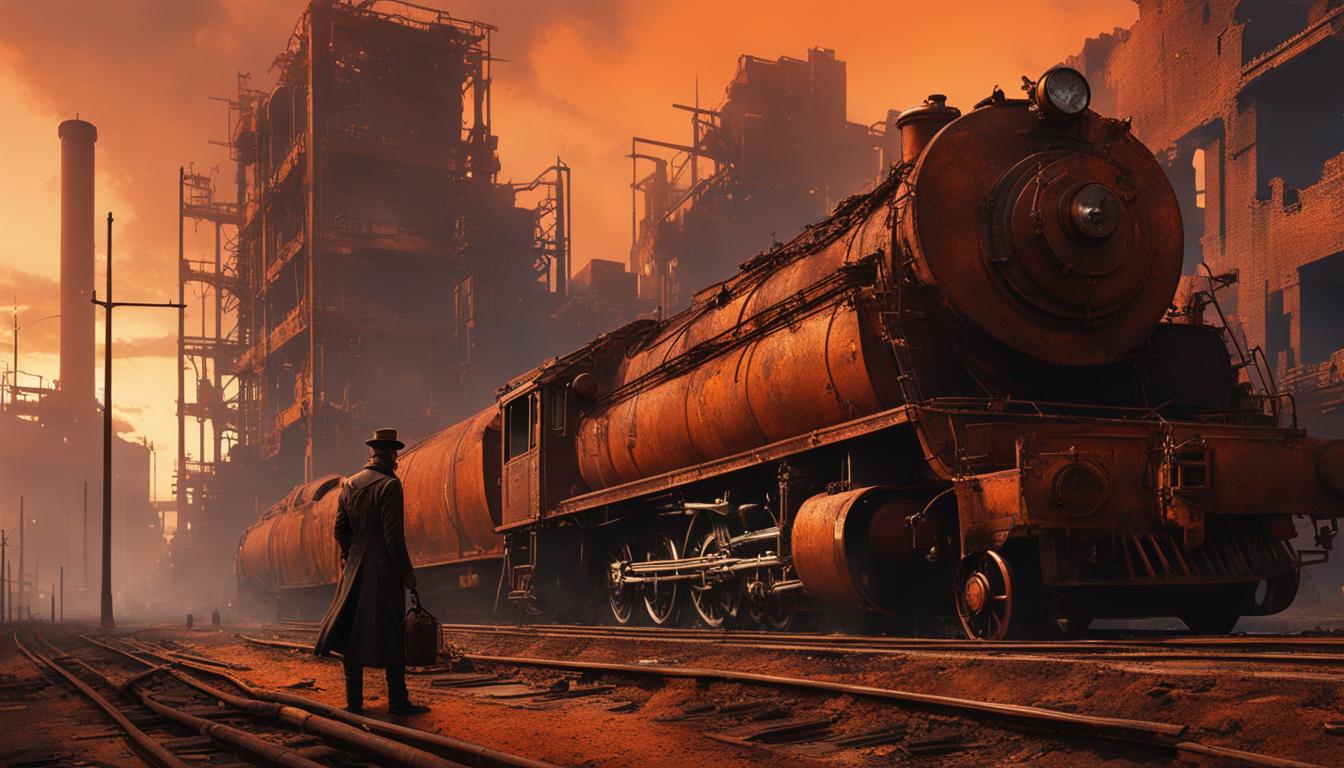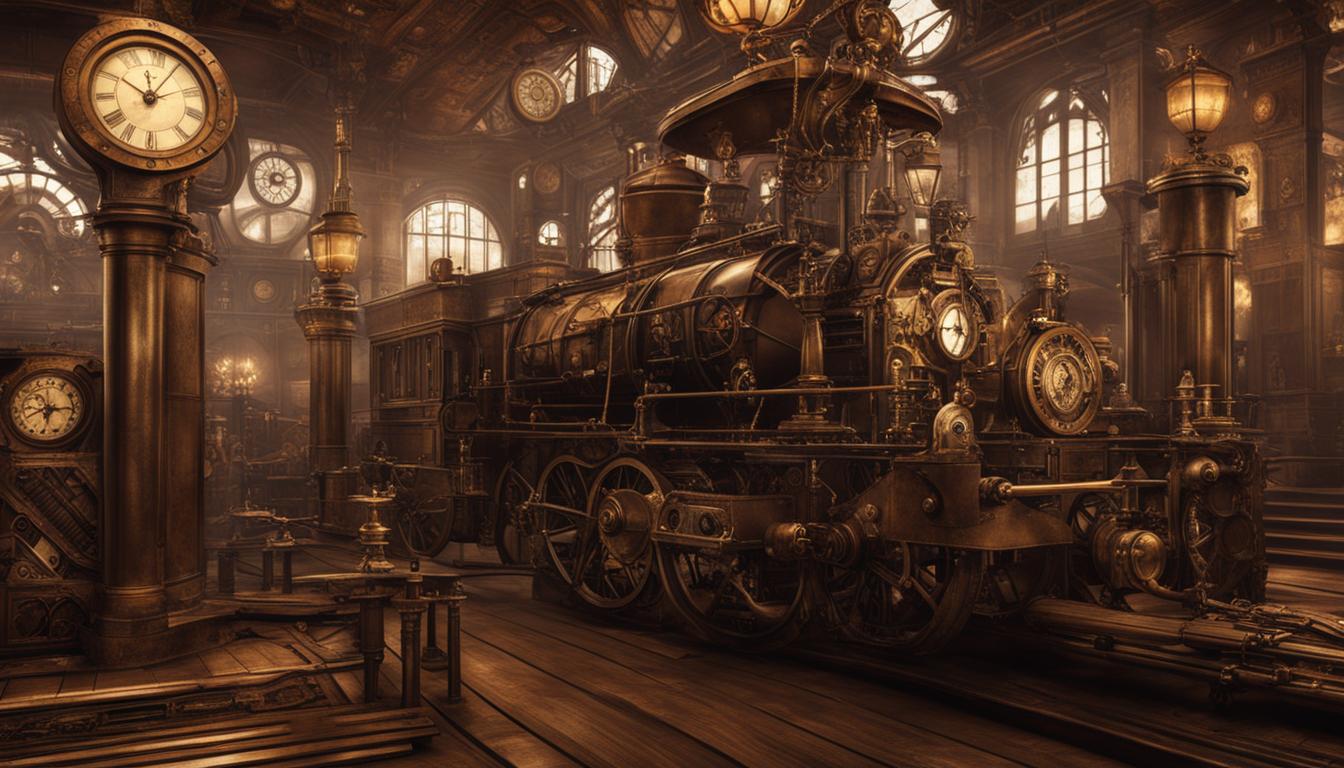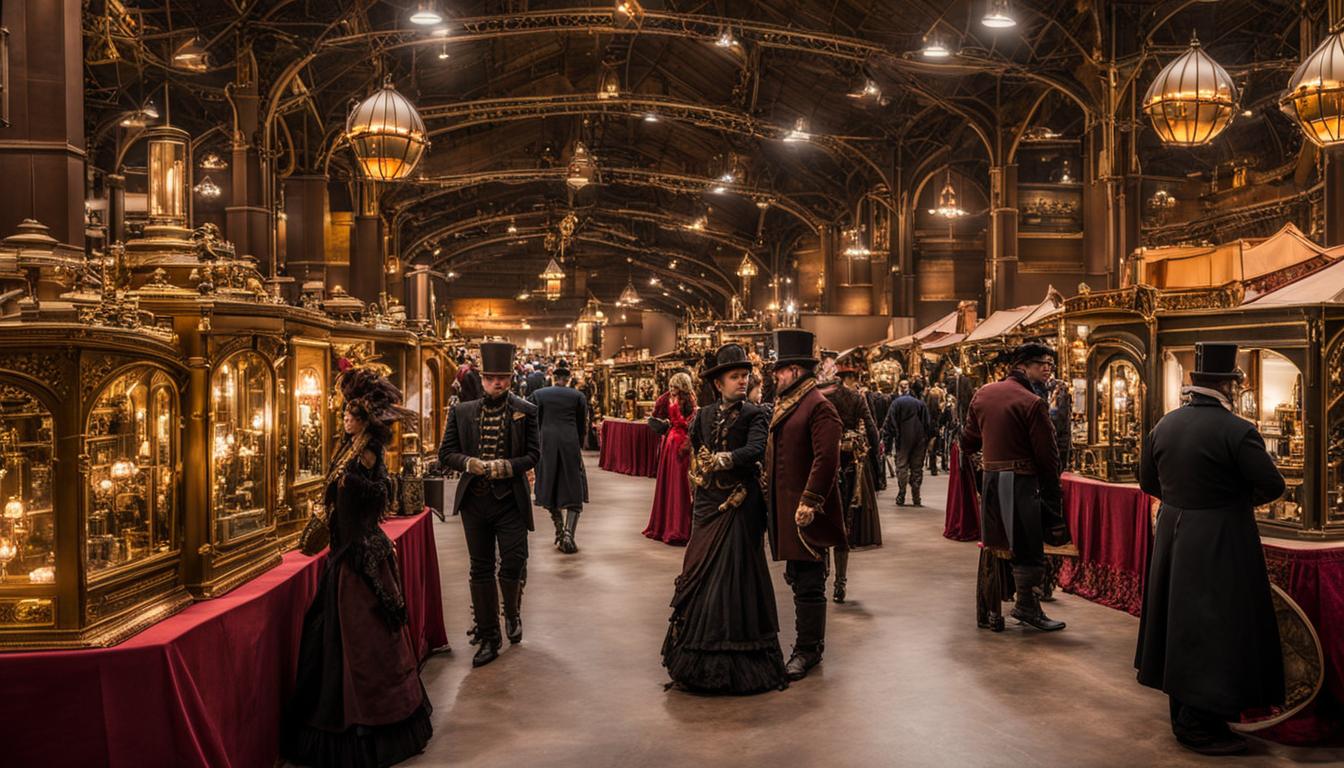Steampunk, with its unique blend of Victorian aesthetics and futuristic elements, has captured the imaginations of many through literature. However, translating this captivating genre to the screen presents a whole new set of challenges. From meticulous planning to securing suitable locations and navigating budget constraints, adapting steampunk for film requires careful attention to detail and creative problem-solving.
During the planning phase, filmmakers must meticulously create storyboards, adapt scenes, and develop shot lists to capture the essence of the steampunk world. They also need to consider the availability of props, costumes, cast, and locations, as these factors greatly impact the success of the adaptation. Balancing creativity and practicality becomes crucial to bring the unique steampunk vision to life on the screen.
While the rewards of successfully adapting steampunk to the screen can be immense, it’s essential to understand the complexities and difficulties inherent in the process. In this article, we will delve into the intricacies of steampunk filmmaking and explore the hurdles that filmmakers face when bringing the enigmatic world of steampunk to life through the visual medium.
Key Takeaways:
- Adapting steampunk to the screen requires meticulous planning and attention to detail.
- The availability of props, costumes, cast, and locations significantly impact the success of the adaptation.
- Steampunk filmmaking involves balancing creativity with practicality.
- The intricate nature of steampunk requires careful adaptation to capture its essence on screen.
- Successfully adapting steampunk to the screen can captivate audiences and create an exciting adventure for filmmakers.
Planning and Pre-production in Steampunk Filmmaking
In the world of steampunk filmmaking, meticulous planning and thorough pre-production are paramount to overcome the complexities and hurdles that come with adapting this unique genre to the screen. Drawing inspiration from steampunk literature, filmmakers strive to capture the essence of this fantastical and often retro-futuristic world, while also ensuring a visually captivating and engaging cinematic experience for audiences.
The initial step in the planning process is to create a comprehensive storyboard that outlines the key scenes, shot compositions, and overall visual style of the film. This storyboard serves as a visual roadmap, ensuring that every aspect of the adaptation aligns with the overarching vision. Additionally, the scene adaptations and shot list provide guidance for the production team, helping them bring the story to life in a cohesive and visually stunning manner.
One of the major challenges in steampunk filmmaking is securing suitable locations that exude the desired atmosphere and aesthetic. Whether it’s an abandoned factory or a Victorian-era mansion, finding the perfect backdrop for the story requires extensive scouting and coordination. These unique and often one-of-a-kind locations add depth and authenticity to the film, immersing viewers in the steampunk world.
Scouting for Locations
Scouting for locations involves not only finding visually appealing settings but also ensuring practicality and feasibility. The intricate and elaborate nature of steampunk often requires specific architectural features or functional structures, which can pose additional challenges. A skilled location manager is essential in identifying potential sites that align with the director’s vision and can accommodate the technical requirements of the production.
Assembling the Crew
In addition to securing locations, assembling a talented and dedicated crew is crucial for the successful execution of a steampunk adaptation. From costume designers who can create intricate and fantastical outfits, to art directors who can bring the unique steampunk aesthetic to life, each member of the crew plays a vital role in crafting the on-screen world. Collaboration and communication amongst the crew are key to ensuring a cohesive and visually stunning final product.
Setting a Budget
Creating a steampunk film can be a costly endeavor, given the attention to detail required in props, costumes, and set designs. Setting a realistic budget is essential to ensure that the production can achieve the desired visual quality without compromising on important elements of the story. This requires careful consideration of the resources available and strategic allocation of funds to different aspects of the production.
Props, Costumes, and Locations in Steampunk Filmmaking
When it comes to turning steampunk novels into films, one of the key challenges lies in the selection and creation of props, costumes, and locations. These elements play a crucial role in bringing the unique steampunk aesthetic to life on screen, immersing viewers in a world where Victorian-era style meets futuristic technology.
In filming steampunk stories, the choice of props and costumes can greatly impact the authenticity and visual appeal of the production. For simpler projects with limited budgets, it is advisable to focus on capturing the feel and mood of the characters rather than getting caught up in extravagant details. However, for more elaborate and ambitious productions, seeking help from the steampunk community or allocating a higher budget for prop and costume rentals can elevate the overall quality of the film.
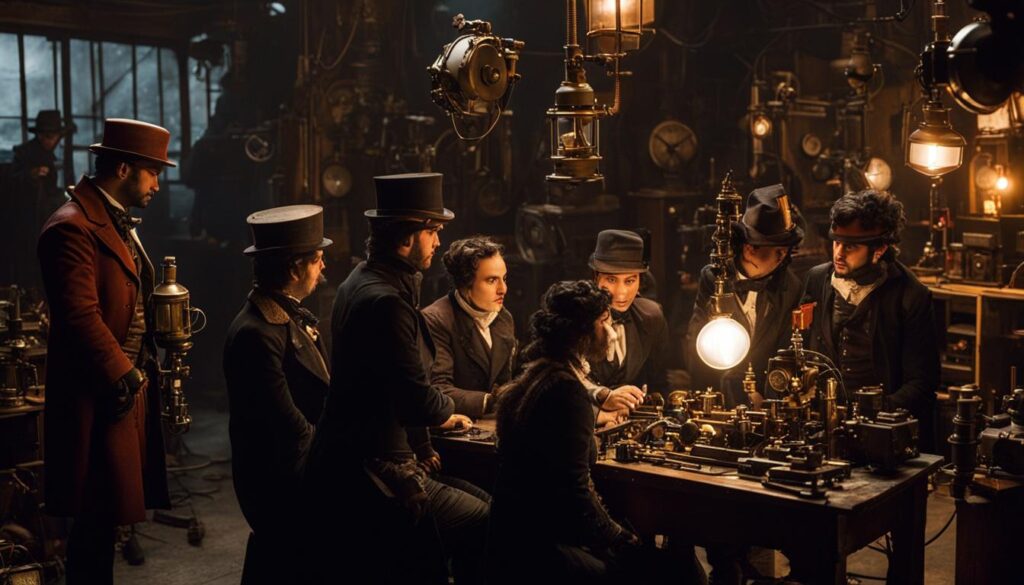
In the world of steampunk, collaboration with skilled artists and makers who specialize in steampunk aesthetics is essential. Their expertise can contribute tremendously to the authenticity and visual appeal of the film, ensuring that every prop and costume piece aligns seamlessly with the steampunk theme. The creativity and attention to detail of these artists can bring the intricate and imaginative world of steampunk to life on the screen.
Table: Locations in Steampunk Films
| Location | Description |
|---|---|
| Gothic-style mansions | Set the stage for mysterious and atmospheric scenes |
| Industrial factories | Reflect the gritty and mechanical nature of steampunk |
| Victorian-era streets and alleys | Evoke the nostalgic charm of the era |
| Airships and dirigibles | Showcase the fantastical nature of steampunk |
Finally, the carefully selected locations play a crucial role in creating the desired steampunk atmosphere. Whether it’s gothic-style mansions, industrial factories, or Victorian-era streets, the locations should enhance the visual storytelling and transport the audience into the world of steampunk. Incorporating airships and dirigibles can further emphasize the fantastical nature of the genre, adding a sense of adventure and wonder to the film.
Overall, the selection and creation of props, costumes, and locations require meticulous attention to detail and a deep understanding of the steampunk aesthetic. Through collaboration with skilled artists and makers, filmmakers can successfully adapt steampunk themes for TV and create visually captivating films that transport viewers to a world where steam-powered machinery and Victorian elegance converge.
Production and Post-Production in Steampunk Filmmaking
Diving into the production phase of a steampunk film requires a delicate balance between professionalism and creativity. The director must oversee the entire process and ensure that the talented cast and crew feel valued and compensated fairly. Despite budget constraints, maintaining a positive and respectful atmosphere is key to fostering a collaborative environment.
The post-production stage is where the magic truly happens in steampunk filmmaking. The editor’s expertise comes into play as they enhance the visual effects, lighting, and title sequences to bring the director’s vision to life. Attention to detail is crucial during this phase, ensuring that every frame contributes to the overall aesthetic and storytelling of the film.
“Steampunk cinematography presents unique challenges due to its intricate and visually complex nature. Capturing the essence of the genre requires meticulous planning and technical prowess to create a world that feels both authentic and captivating.”
Throughout the production and post-production processes, the filmmakers must navigate the challenges specific to steampunk cinematography. From the intricate costume designs to the elaborate set pieces, every element must align with the genre’s aesthetic while still serving the story. Achieving this delicate balance is no small feat, but when done successfully, it transports audiences into a mesmerizing world of gears, steam, and adventure.
| Challenges in Steampunk Cinematography | Solutions |
|---|---|
| Creating believable steampunk technology | Collaborating with talented production designers and prop makers to craft intricate and functional gadgets. |
| Managing complex visual effects | Working closely with skilled visual effects artists who specialize in steampunk aesthetics. |
| Ensuring consistent lighting and color palettes | Collaborating with experienced cinematographers and colorists to maintain the desired atmospheric tones. |
Steampunk cinematography continues to captivate audiences, offering a unique blend of historical nostalgia and speculative fiction. Its transition from novels to movies presents challenges that require careful consideration and creativity. However, with the right team and a clear vision, filmmakers can transport viewers to a world where gears turn, airships soar, and adventure awaits.
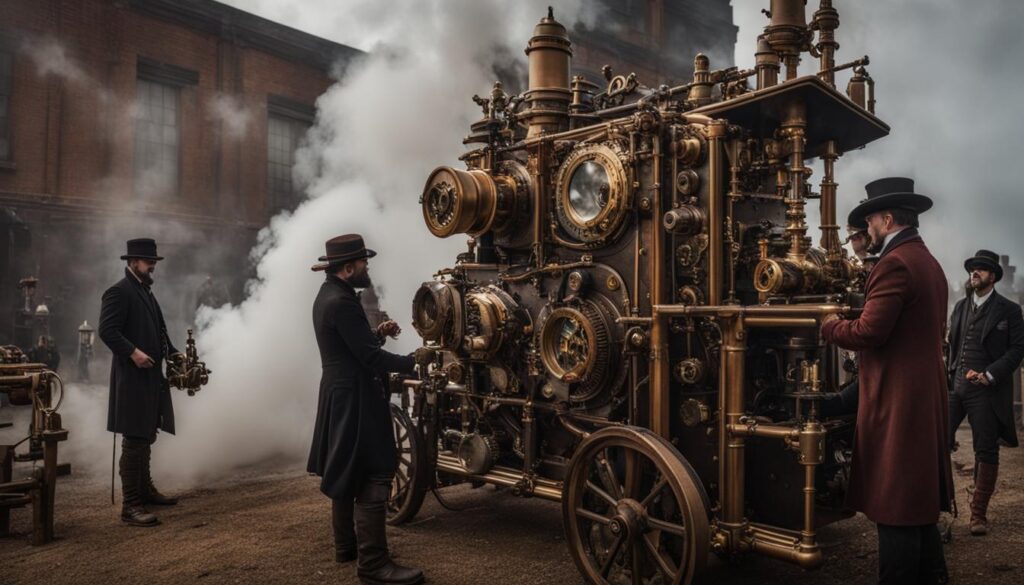
Conclusion
Adapting steampunk to the screen presents a multitude of hurdles and challenges in the world of cinema. From the complexities of screenwriting to the intricacies of production and post-production, filmmakers must navigate a unique set of obstacles.
The process begins with extensive planning and storyboarding, ensuring every scene and shot captures the essence of the steampunk genre. Securing suitable locations and assembling the right cast and crew further adds to the complexity of production.
Moreover, the selection and creation of props, costumes, and locations play a crucial role in bringing the steampunk aesthetic to life. Filmmakers often rely on collaboration with skilled artists and makers to enhance the authenticity of their production.
Despite the challenges faced, the allure of steampunk storytelling in the visual medium continues to captivate audiences. The mix of Victorian era aesthetics and futuristic technology creates a seamless blend of old and new, making steampunk an exciting and mysterious adventure for filmmakers to conquer.
FAQ
What are the challenges of adapting steampunk to the screen?
Filmmaking, especially for steampunk, involves detailed planning, securing locations, adapting scenes, storyboarding, and budget considerations.
What is involved in the planning and pre-production phase of steampunk filmmaking?
Extensive planning is necessary, including creating a storyboard, determining scene adaptations and shot list, scouting locations, assembling a crew, casting talent, creating a shooting schedule, and setting a budget.
How do props, costumes, and locations contribute to steampunk filmmaking?
The selection and creation of props, costumes, and locations play a crucial role in bringing the steampunk aesthetic to life on screen. Collaborating with skilled artists and makers and seeking help from the steampunk community can enhance the authenticity of the production.
How should filmmakers maintain a balance between professionalism and creativity during production and post-production?
It is important to treat the talent with patience and understanding, ensure fair compensation, and collaborate with experienced editors to enhance the visual effects, lighting, and title sequences of the film. The director’s vision should guide the decision-making process in post-production.

